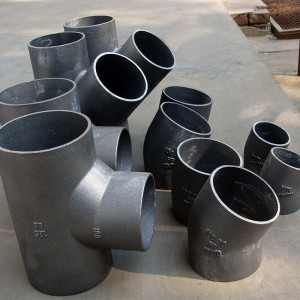តុលា . 21, 2024 18:08 Back to list
Optimizing Energy Transfer in Finned Tube Heat Exchangers for Enhanced Efficiency
Energy Transfer in Finned Tube Heat Exchangers
Finned tube heat exchangers are vital components in a variety of industrial applications, playing a significant role in energy transfer systems. Understanding the mechanisms of energy transfer within these devices is essential for optimizing their performance and enhancing energy efficiency. This article delves into the principles of energy transfer in finned tube systems, their applications, and the factors affecting their efficiency.
The Fundamentals of Finned Tube Heat Exchangers
Finned tube heat exchangers consist of metal tubes that have external fins attached to enhance heat transfer capabilities. The primary function of these exchangers is to transfer heat between two fluids—typically one hot and one cold—without mixing them. The fins significantly increase the surface area available for heat exchange, thus improving efficiency. The enhanced surface area allows for greater contact between the fluids and the tube surfaces, facilitating more effective energy transfer.
Mechanisms of Energy Transfer
Energy transfer in a finned tube heat exchanger occurs primarily through conduction, convection, and occasionally radiation.
1. Conduction This is the process by which heat is transferred through solid materials. In finned tube systems, heat generated in the hot fluid is conducted through the wall of the tube and into the finned surface, where the increased area allows for more effective heat transfer.
2. Convection Once the heat reaches the finned surface, it is transferred to the cooler fluid through convection. In forced convection situations, such as in mechanical systems, pumps or fans enhance the movement of the fluid, increasing the heat transfer rate. Natural convection may also occur, depending on the temperatures and configurations.
3. Radiation Although typically a minimal factor in heat exchangers compared to conduction and convection, thermal radiation can also play a role, particularly at higher temperatures.
Applications of Finned Tube Heat Exchangers
energy transfer finned tube

Finned tube heat exchangers are widely used in various industries, including refrigeration, air conditioning, power generation, and chemical processing. In refrigeration systems, they help to maximize the efficiency of heat transfer between refrigerants and the surrounding environment. In power plants, finned tubes are often employed to dissipate waste heat from boilers and turbines, improving overall system efficiency. Their versatility and efficiency make them suitable for applications requiring robust heat management solutions.
Factors Influencing Heat Transfer Efficiency
Several factors can significantly influence the efficiency of energy transfer in finned tube heat exchangers
1. Fin Design The geometry and material of the fins can greatly affect the performance of a heat exchanger. Fins that are too thick might impede fluid flow, whereas excessively thin fins may not offer enough thermal mass for effective heat transfer.
2. Fluid Properties The viscosity, density, and thermal conductivity of the fluids involved impact the heat transfer characteristics. For instance, low-viscosity fluids typically enhance convective heat transfer due to their higher rates of circulation.
3. Flow Arrangement The way fluids flow through the heat exchanger—whether in parallel, counterflow, or crossflow configurations—also affects the overall efficiency. Counterflow arrangements often yield higher efficiencies due to the temperature gradient maintained between the two fluids.
4. Operating Conditions Temperature variations, pressure drops, and the presence of fouling can significantly disrupt optimal energy transfer. Regular maintenance and monitoring are essential to ensure long-term efficiency in heat exchangers.
Conclusion
Finned tube heat exchangers are a critical component in the realm of energy transfer, offering robust solutions for efficient heat management across various applications. By optimizing design, understanding flow dynamics, and considering the properties of the fluids involved, industries can significantly enhance the performance of these systems. As we continue to focus on energy efficiency and sustainable practices, the role of finned tube heat exchangers will only grow in importance.
-
Durable Centrifugally Cast Iron Water Main Pipe
NewsAug.11,2025
-
Centrifugally Cast Iron Water Main Pipes for Reliability
NewsAug.10,2025
-
High-Quality Centrifugally Cast Iron Water Main Pipes
NewsAug.09,2025
-
Durable Cast Iron Water Main Pipe & Drainage Solutions
NewsAug.08,2025
-
Buy Cast Iron Pipe: Premium Ductile Iron & Drain Solutions
NewsAug.07,2025
-
Durable Cast Iron Water Main Pipe | Buy Ductile Pipe
NewsAug.06,2025


